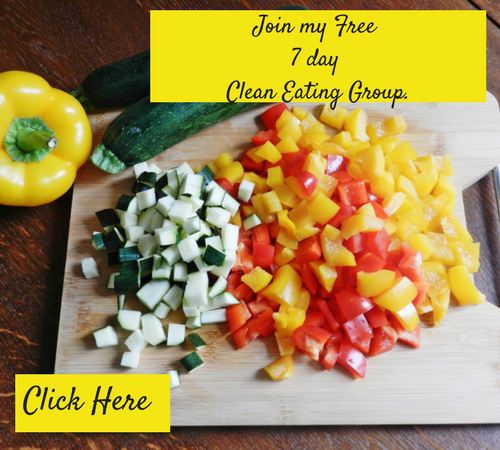Healthy, Edible Plants to grow indoors

From farmer’s markets and Community Supported Agriculture, to urban farms and rooftop gardens, to produce delivery service, more and more people across the U.S. are embracing farm-fresh food.
And for good reason: Locally grown produce tends to be better for the environment and for local communities than its store-bought counterparts. Growing food at home also ensures that growers know exactly where their food comes from and how it was grown (no need to worry about deceptive food labels). If you’re not whipping out the pruning shears yet, consider this: Learning new skills is good for your brain.
Luckily, you don’t need to be a farmer (or even live near a farm) in order to reap the benefits of home-grown produce. If you have a sunny window (or two, or five) and a bit of extra time on your hands, then you’re capable of growing your own food right at home. Read on for our roundup of 16 easy, healthy plants to cultivate indoors — and how to get them growing!
Microgreens
Why They’re Healthy: A big bowl of leaves can be an excellent source of vitamins A, C, K, and folate. And micro greens (a.k.a. seedlings of herbs and vegetables) might have even more nutrients than their full-grown counterparts.
How to Grow: Start by purchasing a variety of seeds, such as radishes, kale, Swiss chard, beets, basil, and dill. Fill a shallow tray (no more than 2 inches deep, often called “seedling trays”) or a shallow pot with a drainage hole and fill the tray to the top with potting mix. Moisten the soil with water, making sure that it’s damp but not wet. Sprinkle the seeds evenly over the soil (they should be close to each other but not touching). Sift a thin layer of soil over the top to cover the seeds. Using a spray bottle, lightly mist the soil. Place the tray on a sunny windowsill in a room that’s between 60 and 70 degrees Fahrenheit. Mist or lightly water the soil daily so it remains moist; don’t let the soil dry out, but also make sure that it isn’t waterlogged. In about three to five days, the seeds will likely germinate — once they do, make sure they get 12-14 hours of light every day. Keep the soil moist at the roots, but avoid soaking the leaves.
How to Harvest: Once the seedlings have grown to one or two inches in height (expect this to take three weeks or more) and have about two sets of leaves, they’re ready to eat! To harvest the greens, hold them at the stem and use a pair of scissors to cut off the leaves, making sure not to cut into the root (by leaving the roots intact, you ensure that your greens will yield multiple harvests). Eat the micro greens right away or store them in a plastic bag in the fridge for up to five days.
Salad Greens
Why They’re Healthy: Just like micro greens, salad greens (which include iceberg, spinach, romaine, red leaf, and arugula) are chock full of vitamins A, C, and K, and also contain folate and iron.
How to Grow: Begin by purchasing starter plants or seeds from a local nursery (You can also order seeds online). Choose a planter box that has drainage holes in the bottom and fill it with potting soil. Use your finger to poke holes into the soil about four inches apart.
If using seeds: Sprinkle a few of them into each hole, then pat the soil back over the hole to cover them up.
If using starts: Massage the roots before placing each start in a hole, filling in around them with soil.
After planting seeds or starts: Water the soil. When plants start to appear (if growing from seed), pull out all but the largest, healthiest shoots. Water the soil regularly, making sure that it always remains moist to the touch.
How to Harvest: To harvest mixed greens, pull off only the outer leaves to allow the plants to keep growing, and be sure not to disturb the roots.
Scallions
Why They’re Healthy: Like garlic, scallions are part of the allium family of vegetables, which has been associated with cancer prevention and may help protect the body from free radicals(by-products of cellular processes that can cause cellular damage).
How to Grow: No seeds required! To cultivate your own scallion crop , simply buy a bunch of scallions, wrap the bulbs together with a rubber band, and place the whole shabang (greens, bulbs, and all) in a glass with an inch of water. Change the water daily. When new green shoots appear and the roots have doubled in length (in about seven to 10 days), plant the scallions in a shallow pot or other container (not too big). Keep the plants evenly wateres (i.e., don’t let the soil get too dry before watering) and in full sun.
How to Harvest: Snip the green tops (leaving at least an inch or two of the plant in the dirt) as needed. To use the white part of the scallion, harvest the plant when they’re six inches tall. Gently pull the white clump from the soil. Washed and trimmed scallions should keep for a week in the refrigerator (To maximize freshness, wrap them in a moist paper towel and store them in a plastic bag.).
Tomatoes
Why They’re Healthy: Tomatoes contain lycopene, which has antioxidant and anti-inflammatory properties and may help prevent coronary heart disease.
How to Grow: Start by selecting one six-inch pot (for one plant) or a larger pot (approximately 12 inches) if you’d like to grow two plants. For a continuous supply of tomatoes, start one or two new plants from seed every two weeks. Fill the container(s) with starter potting mix and plant seeds about ¼ inch deep. Water, keeping the soil moist but not soggy. Place the container in an area that receives substantial sunlight, turning the pot(s) occasionally so all sides have even access to the sun. Expect the seeds to germinate in five to 10 days. When the seedlings are about three inches tall, transplant them from the starter mix to potting soil. About two weeks after transplanting, add an organic fertilizer to the mix. Water the plants thoroughly; again, keep the soil moist but not soggy. As the plants grow larger, they may need to be staked to avoid broken stems. When plants bloom, tap the main stem and larger side branches with your finger — this will help to encourage pollination.
How to Harvest: Tomatoes grown indoors will not grow to be as large as outdoor tomatoes, but they’ll still be full of tomatoey taste. When the fruits are red and firm, but with a slight “give” to the touch, they’re ready to eat. Either clip or gently twist and pull the fruits from their stems.
Basil
Why It’s Healthy: This flavorful herb is believed to have anti-inflammatory properties thanks to the oil eugenol, which can block enzymes in the body that cause swelling.
How to Grow: Start by purchasing seeds or a starter plant online or at a nursery or grocery store. Choose a container that’s at least four inches wide and has good drainage holes. Basil likes warm temperatures and lots of sunlight (at least six hours of direct sunlight each day). Fertilize the soil about once a month with organic or slow-release fertilizers such as compost tea. Water often— about once a day when the temperatures are really hot, or every other day in less intense conditions (If the soil is dry, water it!). Pruning will also help you maximize your basil yield: When the top leaves reach about six inches in height, start pruning them. Continue to prune as the plant gets bushier, also being sure to pinch off any flowers that appear.
How to Harvest: Gently snip a few leaves from each plant, making sure not to remove all of the leaves from any one plant.
Chives
Why They’re Healthy: Chives are filled with antioxidants, vitamins A and C, and phytochemicals (which have antioxidant-like benefits).
How to Grow: Start by purchasing seeds and selecting a pot that’s six to eight inches in diameters. Fill it almost to the top with potting mix. Plant the seeds, making sure they’re covered by a light layer of soil. Place the container in an area that is partially shaded. Water regularly, making sure the soil never dries out.
How to Harvest: Gently snip leaves from each plant, being sure not to remove all the leaves from any one plant.
Cilantro
Why It’s Healthy: Cilantro yields high concentrations of carotenoids, a good source of Vitamin A that may help to protect against heart disease, stroke, and cancer.
How to Grow: Begin by pirchasing coriander seeds (fun fact: coriander is actually cilantro in seed form) or starter plants and selecting a container that’s at least eight inches deep and has holes in the bottom for drainage. Fill the container with soil, leaving about an inch or two at the top of the pot. Press the seeds into the soil, then water the soil until moist. Cover the container with plastic wrap, securing it with rubber bands. Remove the plastic wrap once the seedlings have germinated and are pushing against the plastic (this should take a few days). Water the seedlings every day or so and keep the container in an area that receives a substantial amount of sunlight.
How to Harvest: Gently snip a few leaves from each plant, being sure not to remove all the leaves from any one plant.
Mint
Why It’s Healthy: Beyond being tasty, this bright green herb can aid digestion. Mint tea has also been known to soothe hangovers.
How to Grow: Start by purchasing seeds or starter plants and a large, deep pot (about 10 inches in diameter) — mint will sprawll. Fill the container with potting soil and plant the seeds or starter. Place the container in an area that gets plenty of sunlight and water regularly, making sure the soil doesn’t dry out.
How to Harvest: Gently snip a few leaves from each plant, making sure not to remove all the leaves from any one plant.
Rosemary
Why It’s Healthy: The heavenly-scented herb is rich in carnosic acid, an antioxidant that may help limit weight gain and improve cholesterol levels.
How to Grow: Start by planting seeds (or propogating cuttings) in a container with holes in the bottom for drainage. A soil made from a mixture of two parts potting soil to one part coarse sand works well. Add one teaspoon of lime (the agricultural kind, not the citrus fruit) per five-inches of pot in order to make the soil alkaline. Place the container in a sunny area of the home; rosemary will grow best with at least six hours of direct sunlight each day. Water only when the top of the soil is dry to the touch (but be sure not to let the soil dry out completely).
How to Harvest: Gently snip a few sprigs from each plant, being sure not to remove all of the leaves from any one plant.
I know this time of year I am dying for fresh veggies and herbs but at least this way I can get a few things growing inside to satisfy my taste buds.













